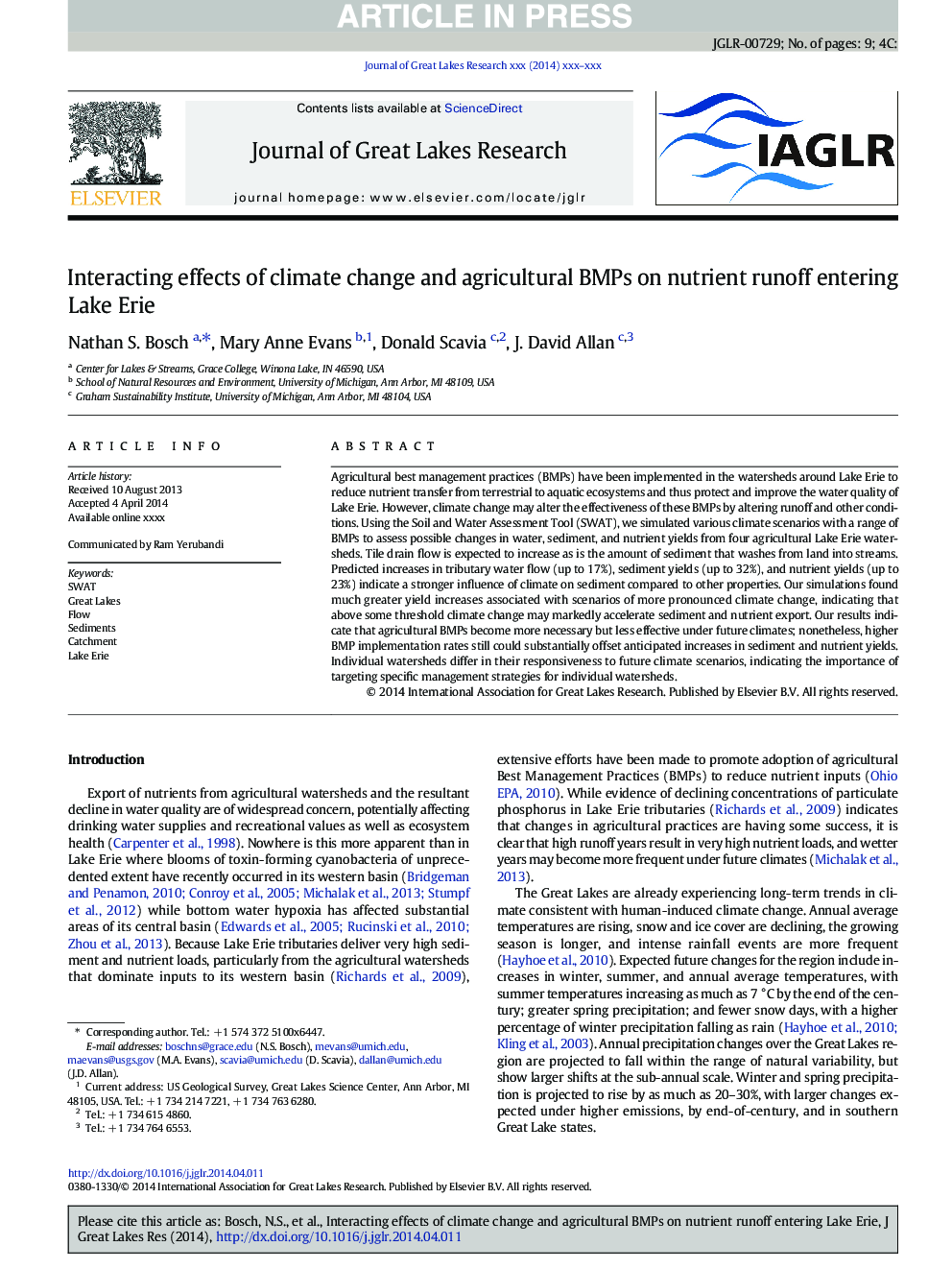| Article ID | Journal | Published Year | Pages | File Type |
|---|---|---|---|---|
| 6305281 | Journal of Great Lakes Research | 2014 | 9 Pages |
Abstract
Agricultural best management practices (BMPs) have been implemented in the watersheds around Lake Erie to reduce nutrient transfer from terrestrial to aquatic ecosystems and thus protect and improve the water quality of Lake Erie. However, climate change may alter the effectiveness of these BMPs by altering runoff and other conditions. Using the Soil and Water Assessment Tool (SWAT), we simulated various climate scenarios with a range of BMPs to assess possible changes in water, sediment, and nutrient yields from four agricultural Lake Erie watersheds. Tile drain flow is expected to increase as is the amount of sediment that washes from land into streams. Predicted increases in tributary water flow (up to 17%), sediment yields (up to 32%), and nutrient yields (up to 23%) indicate a stronger influence of climate on sediment compared to other properties. Our simulations found much greater yield increases associated with scenarios of more pronounced climate change, indicating that above some threshold climate change may markedly accelerate sediment and nutrient export. Our results indicate that agricultural BMPs become more necessary but less effective under future climates; nonetheless, higher BMP implementation rates still could substantially offset anticipated increases in sediment and nutrient yields. Individual watersheds differ in their responsiveness to future climate scenarios, indicating the importance of targeting specific management strategies for individual watersheds.
Related Topics
Physical Sciences and Engineering
Earth and Planetary Sciences
Earth and Planetary Sciences (General)
Authors
Nathan S. Bosch, Mary Anne Evans, Donald Scavia, J. David Allan,
